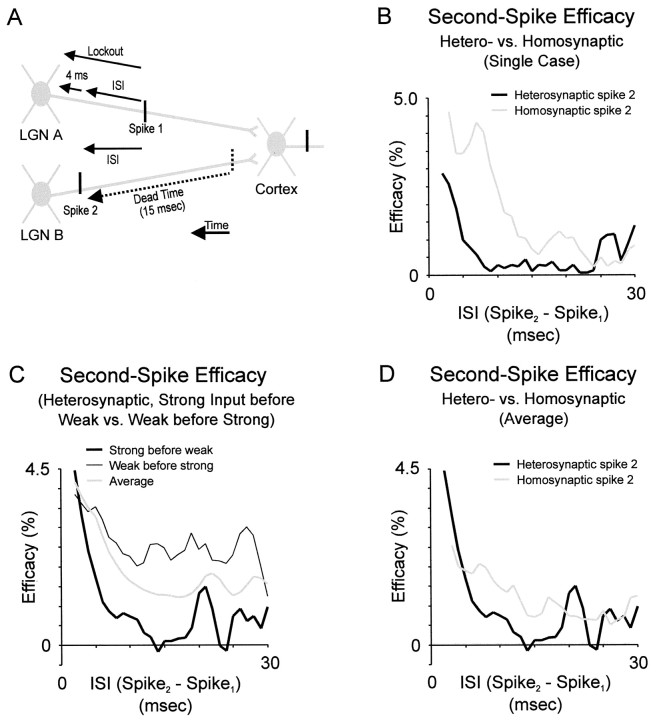Fig. 5.
Time course and magnitude of heterosynaptic paired-spike enhancement. A, Illustration of analysis showing the temporal relationships between spikes from two LGN cells (LGN A and B). Spike 1 was from cellA; spike 2 was from cell B. For various ISIs between spike 1 and spike 2, it was required that cell A fire no spikes during a lockout period, which included the ISI plus 4 msec. The additional 4 msec insured that a second spike from cell A did not sum with spike 2 (from cell B). In addition, the analysis required that cell B produced no spikes during a dead time of 15 msec (the approximate duration of homosynaptic interactions) before spike 2. B, Time course of heterosynaptic interactions (effect of cell A on cell B) versus homosynaptic interactions (effect of B on B) for a single cell. C, Averaged heterosynaptic interactions for the 4 ‘triplets’ in our data set. For each triplet, the effect was more pronounced when the strong input preceded the weak input. D, Comparison of average heterosynaptic interactions (strong input preceding weak) versus average homosynaptic interactions for same cells (as in B).

